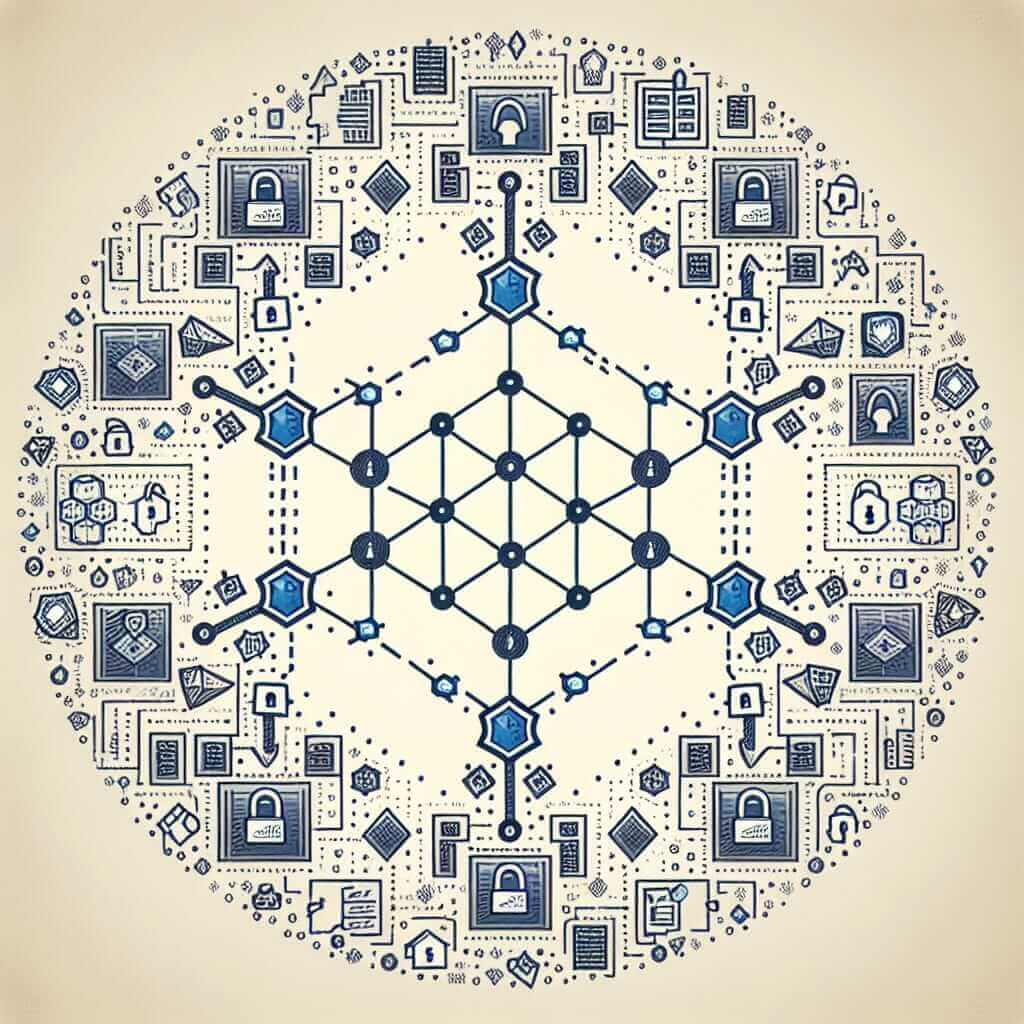The Reading section of the IELTS exam can be a challenging part for many test-takers. The section tests your comprehension skills, your ability to understand implications, and your vocabulary. With technology rapidly advancing, topics related to blockchain and digital identity management are becoming more prevalent in reading materials. Understanding these topics can help you better handle relevant passages you might encounter during the exam.
In recent years, blockchain technology has significantly impacted digital identity management. Given its rising significance in modern technology discussions, this topic could very well appear in future IELTS Reading tests. This article will provide a reading practice passage on this topic, simulating the complexity and style of an actual IELTS test passage.
Reading Passage
How Blockchain Technology is Transforming Digital Identity Management
Blockchain technology has often been associated with cryptocurrencies such as Bitcoin, but its applications go far beyond that. One of the burgeoning fields where blockchain is making a substantial impact is digital identity management. Traditionally, digital identities have been managed using centralized systems, which pose several vulnerabilities, including data breaches, identity theft, and privacy concerns. Blockchain technology offers a decentralized, secure, and transparent alternative.
The core principle behind blockchain is its decentralized ledger, where data is stored in blocks that are linked or “chained” together in a sequence. Each block contains a record of transactions that is timestamped and cryptographically secured. This ensures that once a block is added to the chain, it cannot be altered without altering all subsequent blocks, making the blockchain highly resistant to tampering and fraud.

One of the primary benefits of employing blockchain in digital identity management is enhanced security. In traditional systems, hacking a central database can expose countless identities. With blockchain, even if a breach occurs, the distributed nature of the ledger makes it extraordinarily difficult for hackers to corrupt the data.
Privacy is another significant gain. Blockchain enables users to have control over their own identity information, allowing them to share only what is necessary. For example, during a financial transaction, a user could prove they are of legal age without revealing their exact date of birth. This selective disclosure is managed through cryptographic techniques, which further fortify the security of the information.
Moreover, blockchain technology can streamline identity verification processes, thereby reducing fraud and speeding up transactions. Since all the identity data is verified and stored on the blockchain, it can be easily and quickly accessed by authorized entities, eliminating the need for repetitive data entry and verification. Governments, financial institutions, and healthcare providers are increasingly adopting blockchain for these very reasons.
However, blockchain is not without its challenges. The technology is still in its nascent stages, and integrating blockchain with existing systems can be complicated and resource-intensive. There are also concerns regarding the scalability of blockchain networks and the regulatory standards that should govern their use in identity management.
Nevertheless, the potential benefits of blockchain in digital identity management are too significant to ignore. As the technology matures, it is expected to revolutionize how personal data is managed, creating more secure, efficient, and user-centric identity systems.
Questions
Choose the correct letter, A, B, C, or D.
-
What is the traditional method of managing digital identities?
- A. Decentralized systems
- B. Blockchain technology
- C. Centralized systems
- D. Distributed ledgers
-
According to the passage, how can privacy be enhanced using blockchain?
- A. By sharing all personal information
- B. By maintaining a central database
- C. By making data tamper-proof
- D. By allowing selective disclosure of information
Identify whether the following statements are true, false, or not given in the text.
-
Blockchain technology is only used in cryptocurrency.
- A. True
- B. False
- C. Not Given
-
Governments are hesitant to adopt blockchain technology.
- A. True
- B. False
- C. Not Given
Match each statement with the correct paragraph (A, B, C, or D).
- Blockchain records transactions using a cryptographically secured timestamp.
- The decentralized nature of blockchain makes it difficult for hackers to corrupt data.
- Blockchain allows for quicker identity verification processes.
Answers
Multiple Choice
- C. Centralized systems
- D. By allowing selective disclosure of information
True/False/Not Given
- B. False
- C. Not Given
Matching Statements to Paragraphs
- Paragraph B
- Paragraph B
- Paragraph C
Common Mistakes
When dealing with reading passages like the one above, test-takers often misinterpret specific details or fail to understand the overall structure. Common mistakes include:
- Misreading specific words or phrases, leading to incorrect answers in True/False/Not Given questions.
- Not properly matching headings or statements to the correct parts of the passage.
- Focusing too much on unfamiliar vocabulary, instead of gleaning the overall meaning from context.
Vocabulary
- Decentralized (adj) /ˌdiː.sɛnˈtræl.aɪzd/: Phân quyền
- Tamper-proof (adj) /ˈtæm.pər.pruːf/: Chống giả mạo
- Ledger (noun) /ˈlɛdʒ.ər/: Sổ cái
- Cryptographic (adj) /ˌkrɪp.təˈɡræf.ɪk/: Mã hóa
- Nascent (adj) /ˈnæs.ənt/: Mới nở, mới phát triển
Grammar Note
When writing or reading complex informational texts, it’s common to encounter passive voice construction. Notice in the passage:
- “Identity data is verified and stored on the blockchain” uses passive voice to emphasize the action rather than the subject performing it.
Form: [Subject] + [form of “be”] + [past participle] + [rest of sentence]
Example:
“The tasks were completed by the team.”
Recommendations
To achieve a high score in the IELTS Reading section, continually practice with complex texts like the passage above. Focus on identifying key ideas, improving your vocabulary, and understanding grammatical nuances. Additionally:
- Utilize practice tests to get familiar with the test structure.
- Read a variety of topics to improve comprehension skills.
- Work on improving speed and accuracy in reading.
Remember, preparation is key to success in IELTS Reading.